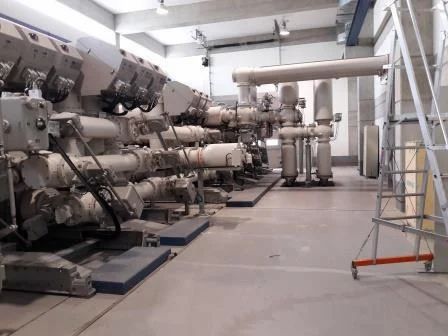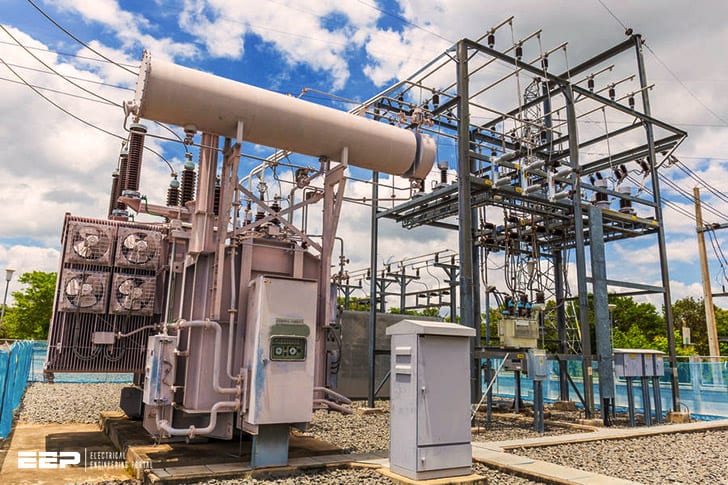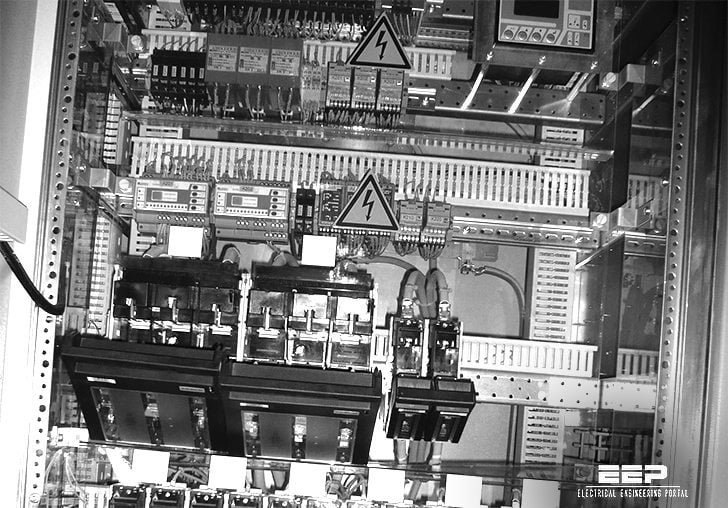A GIS substation is a type of electrical substation that uses gas-insulated switchgear (GIS) to manage the distribution of electricity. They are typically used in high-voltage applications where space is limited, such as in urban areas. GIS substations are more expensive to build than traditional air-insulated substations (AIS), but their small footprint and ability to withstand extreme weather conditions make them ideal for many applications.
GIS substation design is a critical part of any electrical grid. Without a well-designed substation, the electricity flowing through the grid can be disrupted, causing blackouts and other power outages.
A GIS substation is made up of several different components, all of which must be carefully designed to work together seamlessly.
The most important component of a GIS substation is the gas-insulated switchgear (GIS). This is the heart of the substation, where high-voltage electricity is switched on and off.
The GIS must be able to withstand extreme conditions, including lightning strikes and high winds.
It must also be able to operate in both hot and cold weather. To do this, the GIS must be made of special materials that can resist these conditions.
In addition to the GIS, other important components of a substation include transformers, circuit breakers, and busbars.
These components must also be carefully designed to work together with the GIS.
A well-designed GIS substation can help prevent blackouts and power outages by providing a safe and reliable way to switch electricity on and off.
High Voltage Gas Insulated Switchgear Webinar
Gas Insulated Substation Wikipedia
A gas insulated substation (GIS) is a substation in which the primary components are enclosed in a sealed environment with sulfur hexafluoride (SF6) gas as the insulating medium. Gas insulated substations are used in place of air-insulated substations (AIS) when space and/or environmental conditions are not conducive to using an AIS.
The key advantages of a GIS over an AIS are that it takes up less space, is more resistant to extreme weather conditions, and provides a higher degree of protection from electromagnetic interference.
However, GIS technology is more expensive than AIS technology, and there is also the potential for environmental damage if SF6 gas leaks from the equipment.
Gis Substation Equipment
GIS (Gas-Insulated Switchgear) substation equipment is used in high voltage power transmission and distribution systems. It is typically used in locations where space is limited, such as underground vaults or on rooftops.
GIS substations use gas-filled metal enclosures to insulate electrical equipment from the environment and from each other.
This type of insulation reduces the risk of fire and explosions, and makes GIS substations more reliable than air-insulated substations.
GIS substation equipment includes circuit breakers, transformers, busbars, and disconnectors. Circuit breakers are used to interrupt the flow of electricity in the event of a fault or overload.
Transformers convert high voltage electricity into lower voltages that can be used by homes and businesses. Busbars connect all of the components in a GIS substation together. Disconnectors provide a safe way to shut off power to specific parts of the system for maintenance or repairs.
Gis Substation Working Principle
A substation is a crucial part of the electricity supply system. It is where high-voltage transmission lines meet lower-voltage distribution lines and where the voltage is transformed from one level to another. Substations also provide switching, protection, and control for the electric power system.
The working principle of a substation can be explained with the help of a simple diagram. Let us consider a generating station having two units each producing 110 kV. The output from these units is fed to a common busbar through circuit breakers.
From this busbar, three 220 kV transmission lines originate each going to different load centers. Now let us assume that one of the load centers experiences an overload and trips its circuit breaker. This will cause current flow in the other two directions which may lead to overloading and tripping of their respective circuit breakers as well.
To avoid this scenario, disconnecting devices called isolators are placed at certain intervals along the transmission line so that only the affected section gets isolated when there is an overload or fault in any particular section.
Similarly, on the distribution side too, there will be several 11 kV feeders originating from a common 33/11 kV transformer supplying power to different loads in an area.
Abb Gis Switchgear Manual
An ABB GIS switchgear manual is a great resource for those who need to know more about this type of electrical equipment. This guide provides detailed information about the different types of GIS switchgear, their applications and how to properly maintain them.
Ais And Gis Substation
The use of AIS and GIS in substations is an important part of the modern electrical grid. AIS, or Automatic Identification System, is a system that uses transponders to automatically identify objects within a certain area. This information is then used by GIS, or Geographic Information System, to create a map of the area.
This map can be used to track the location of objects, as well as their movements over time.
AIS and GIS are often used together in order to create a more complete picture of the electrical grid. For example, AIS can be used to identify the location of substations, while GIS can be used to track the flow of electricity between them.
By combining these two systems, utilities can more easily monitor and manage the electrical grid.
Gas Insulated Switchgear Pdf
Gas insulated switchgear (GIS) is a type of electrical switchgear where the insulating medium is sulfur hexafluoride gas (SF6). It is used in place of air as an insulating medium because SF6 is much more effective at preventing arcing and arc flash than air.
GIS is typically used for high-voltage equipment such as substations, circuit breakers, and transmission lines.
The main advantage of GIS over other types of switchgear is that it takes up less space and is more reliable.
Disadvantages of GIS include the high cost of SF6 gas, the need for specialised training to work with it, and the environmental impact of its release into the atmosphere.
Gis Transformer
GIS Transformer is a powerful tool that can help you transform your data into insights. It can help you turn your data into maps, charts, and reports. You can use GIS Transformer to make better decisions about where to live, work, and play.

Credit: electrical-engineering-portal.com
What is Gis Substation Concept?
In the electric power industry, a substation is a high-voltage electrical system between the generating station and consumer, including transformers to step down voltage levels. A GIS (geographic information system) is a computer system that allows for the capture, storage, retrieval, analysis and display of geographically referenced data. The combination of these two technologies – GIS and substations – is referred to as a GIS substation.
A GIS substation uses a geographic information system to manage data related to electrical substations. This can include everything from asset management and inventory, to maintenance records and outage history. By integrating all of this data into a single system, utilities can gain greater visibility into their operations and make more informed decisions about where to allocate resources.
There are many benefits of using a GIS substation over traditional methods of managing data. Perhaps the most significant benefit is improved decision making. With all of the relevant data in one place, managers can more easily identify patterns and trends that would otherwise be hidden in disparate systems.
This leads to better asset utilization and improved reliability for customers.
Another key benefit is increased efficiency. When staff members can quickly find the information they need without having to search through multiple systems, they are able to work more efficiently and get their jobs done faster.
What is Difference between Ais And Gis Substation?
There are many differences between an AIS (Automated Identification System) substation and a GIS (Geographic Information System) substation. Perhaps the most notable difference is that AIS uses Automatic Data Collection (ADC) devices to collect data, while GIS relies on manual data entry. This means that AIS is much faster and more accurate than GIS when it comes to collecting data.
Another key difference is that AIS can be used for tracking purposes, while GIS cannot. This is because AIS collects data about the location of objects, whereas GIS only collects data about static geographical features. This means that if you need to track the movement of something over time, you would need to use an AIS system rather than a GIS system.
Finally, it should be noted that AIS systems are typically more expensive than GIS systems. This is because they require specialised hardware and software, and also because they need to be regularly maintained in order to function properly.
What is the Disadvantage of Gis Substation?
There are a few disadvantages of GIS substations. One is that they are more expensive to build than traditional substations. Another disadvantage is that GIS substations require more maintenance than traditional substations.
Finally, GIS substations can be less reliable than traditional substations during power outages or other emergencies.
How Do You Design a Substation?
Designing a substation is no simple feat – it requires careful planning and execution in order to ensure that the finished product meets all safety and reliability standards. Here are just a few of the considerations that must be taken into account when designing a substation:
Location: The first step is to determine an appropriate location for the substation.
This will involve taking into account factors such as population density, topography, availability of land, etc. Once a suitable location has been found, the next step is to obtain all necessary permits and approvals from local authorities.
Layout: The layout of a substation must be carefully designed in order to maximize space and efficiency.
All equipment must be arranged in an easily accessible manner so that maintenance can be carried out quickly and safely. Additionally, care must be taken to ensure that there is sufficient room for expansion in the future.
Equipment: A wide variety of electrical equipment is required in a substation, ranging from transformers and circuit breakers to control panels and cables.
Careful thought must be given to selecting the right pieces of equipment for each specific application. Additionally, compatibility between different pieces of equipment must be considered so that they can all work together seamlessly.
Conclusion
The blog post discusses the design of GIS substations. It explains that these substations are designed to be more efficient than traditional substations, and describes the various components of a GIS substation. The post also covers some of the challenges associated with designing and constructing GIS substations.



